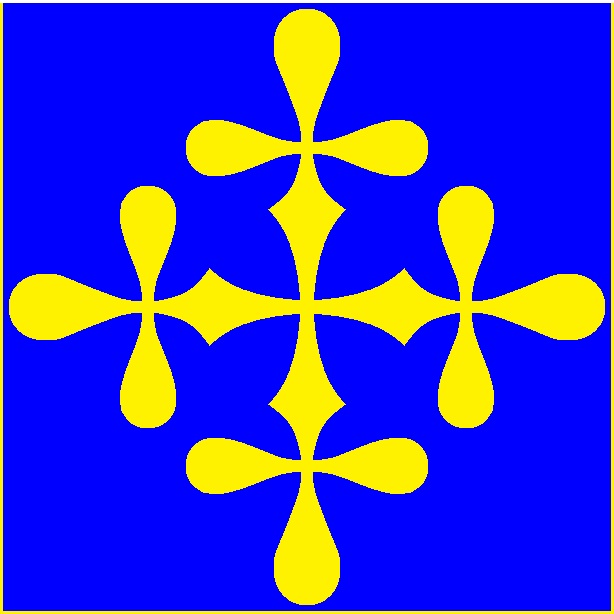 |  | ||||||||||||||||||||||||||||
| The United Galaxies Council Aero-Space Forces (UGC ASF) is the aero-space defense branch of the United Galaxies Council Armed Forces. Most of its progenitors were originally formed under their nation's army; However, when the United Earth Government was forming the Robotech Defense Forces, the UN Air Force (as it was called at the time) was fully separated. It is headed by the Aero-Space Forces Chief of Staff who reports to the Chief Of Galactic Security and serves at the pleasure of the Chairman, United Galaxies Council. Due to the limited mobility of the ASF in the Stellar Age, most "ASF's" are Defense Forces; As such, the UGC ASF itself is actually quite small, with only 3 fighter wings (First, Second, and Third Fighter Wings), one bomber wing (First Bomber Wing), and five logistic wings (First, Second, and Third Transportation Wing, First Electronics Wing, and First Air Refueler Wing). It has only 5 ships, the ALLIANCE-Class UGS DEFIANCE, the V'GER-Class UGS FORWARD, the SOJOURNER- Class UGS ENDURANCE, and two KC-200/CAPRICA-Class Refuelers, the UGS LONGEVITY and FORTITUDE. They do however have 25 space stations, all but one of which, Lackland Station, is a Babylon-Class station. The ASF's main mission is administration of the RDF ASF's, testing and evaluation of new equipment, doctrines, tactics, and protocols, overseeing training, There have been plans to dissemble the ASF, usually putting it as part of the Spacy; However, these plans have consistently been scrubbed due to the individual planets needs for their own aero-space defenses and the need to administer all these separate entities. Also, the UCG ASF selects RDF wings for forward mission tasking under the Spacy (see RDF ASF's for more information). The ASF is trying to get into the warfighting business as well, withtheir primary push being the construction of a fleet of ACCLAMATOR II-Class Orbital Bombardment ships that will house 144 fighters and replace the fleet of B-104 Galxy Bombers (along with possibly the B-104's). This push is finding stiff resistance at the council, but will eventually succeed. The UGC ASF is deeply "officer heavy" and top officers, at that; The current lowest ranking officers are Captains, and fairly few of those, about half of which are Lt. Colonels and Colonels; This is no accident. To even be considered for the ASF, you have to have served in the RDF ASF's for at least 6 years, and then be tested against others in your paygrade for transfer. It's is explained in the testing brief- "In your hands goes the future of the Aero-Space Forces of the entire United Galaxies Council; You have only one chance to get it right, and hundreds of chances to get it wrong. Get one wrong, one time, and millions may perish or be enslaved, even the entire empire collapse. So you have to get it perfect, each and every time." The UGC ASF has 250,000 active duty personnel, of which about 2/3 are officers, 200,000 civilian personnel, 300,000 Reserve personnel, and several million Defense Force personnel; Added to this is about 10 billion Regional Forces (Home/National Guard, etc.) personnel. Missions Vision: The RDF Air Force was formed in January of 2005 along with the other 4 branches of the Robotech Defense Forces, using personnel and equipment volunteered to the UN as a nucleus; New equipment and personnel were acquired, and the equipment all returned to the donor states; Most of the personnel were as well, though about 25% requested to have their contract continued through the RDF. The RDF Air Force served very honorably through the First and Second Robotech Wars, and supported the anti-Invid forces as well as circumstances permitted through the Third Robotech War while suffering heavily in the Tirsian Campaign. After the first defeat of the Invid, 41 Since 2115, the ASF has placed a strong focus on the improvement of Basic Military Training (BMT) for all personnel, including a recommitment to deployment phase. This deployment phase, now called the BEAST, places the trainees in the same environment they experience on deployment, including building a camp city in the middle of nowhere, a massive obstacle courses, a mock SAR mission, and several types of mock attacks, including suicide bombing, car bomb, aerial bombing, mortar attack, and massed infantry attack (with the massed infantry attack being an all-night exercise to create sleep deprivation). Militry Training Instructors act as mentors and enemy forces in a deployment exercise. Organization Administrative Organization. The Department of the Air Force is led by the Chief of Staff of the Air Force and the Vice Chief of Staff of the Air Force. The Major Command (MAJCOM) is the superior hierarchical level of command. Including the Aero-Space Reserve Command, as of 30 September 2156, UGC ASF has 32 major commands. The Numbered Air Force (NAF) is a level of command directly under the MAJCOM, followed by, Wing, Group, Squadron, and Flight. Operational Organization. Each wing in the ASF is semi-autonomous to the other wings, allowing them to focus on their own mission, while supporting the others in theirs. Since 90% of the ASF's mission at this time is to administer the RDF ASF's and work on new technology development, they can maintain their readiness indefinitely. Aerospace Expeditionary Task Force. When the Spacy, Marine, Patrol, or Army requires ASF support in a field operation, ASF units are transferred to the operational control of the requesting unit(s) and will usually operate out of bases set up for the ASF, be that ground bases or, very often, ships in orbit that will be launching and recovering the aero-spacecraft. In a rather unusual example of this, 223 Uniforms Dress Uniform The AeroSpace Forces use the same style of uniform as the other 4 branches in "AeroSpace Force Blue" (a darker purplish-blue), light blue shirt and necktie or crossover tie. Enlisted members wear sleeve insignia on both the jacket and shirt, while officers wear metal rank insignia pinned onto the coat, and Air Force Blue slide-on epaulet loops on the shirt. The Battle Dress Uniform (BDU) is the sole authorized utility uniform (except the flight suit for air, missile and space crews) of the USAF. Rate Badges In addition to basic uniform clothing, various badges are used by the UGC ASF to indicate a qualification. Authorized badges include the Shields of USAF Fire Protection, and Security Forces, and the Missile Badge (or "pocket rocket"), which is earned after working in a missile system maintenance or missile operations capacity for at least one year, Command And Control, Pilot and Flight ratings, and other duties. Training. All non-prior service enlisted Airmen attend Basic Military Training (BMT) at an Aero-Space Forces Force Base in their home system for 9 weeks. Prior service enlisted are exempt. After this, they are sent to Technical Vocations School. Commissioned Officers attend one of the ASF or other Militry Academies: Basic Officer Training (BOT), for line-officer candidates; Or Commissioned Officer Training (COT) for officers of all three components who are direct-commissioned to non-line positions with degrees is medicine, law, or religion. Aero-Space Inventory. If the UGC officially fields it, and if it flies, the ASF flies them at some point. It was a joint ASF-Marine push that got the Warbirds back into service, though the Marines pushed for the P-51 Mustang while the Marine pushed for the F-4U Corsair Fighter (on the grounds of it's multi-role/multi platform capabilities). Ironically, both also wanted the B-25 Mitchell III Bomber, and as the de Havilland DH.98 Mosquito come fully on line these will be taking up some of the space taken by the Corsair and Mitchell III's. Literally everything in Aero-Space Defenses can be found in the ASF, as well as hundreds more, since the ASF is the certifying agency for UGC government aerospace platforms; However, the ASF doesn't fly enough of them to make them worth mentioning.. Culture. The culture of the ASF is driven by pilots, and includes an egalitarianism bred from officers perceiving themselves as their service's principal "warriors" working with small groups of enlisted airmen either as the service crew or the onboard crew of their aircraft. The ASF, like the other agencies that helped to found it, has been an organization in which mostly its officers fought, with enlisted personnel in a support force. When the enlisted do go on combat operations, the extremely close quarters and shared dangers create a comraderie not seen in other branches of the service. The same cultural perception has stymied Council efforts to convert to a fully UAV-based service, as pilots dislike the idea of not "being there." As UGC law specifically required a person to make the fire/don't fire decision, there is very little they can actually do about it- For now. The ASF's traditions are an amalgamation of those taken from the many services that have contributed to its foundation over the centuries, mostly the Air Forces (hence the plural in the ASF's name) of Terra. Special Operations. Special Operations are "operations conducted in hostile environments to achieve militry and/or informational objectives employing capabilities for which there is little or no conventional force requirement or ability. These operations may require covert, clandestine, or low-visibility capabilities. They can be conducted independently or in conjunction with operations of conventional forces or other government agencies and may include operations with or by indigenous or surrogate forces." These include operations involving rescue of UGC citizens, personnel, and/or intelligence assets, disruption of enemy communication, logistic, and command lines, disabling enemy manufacturing capabilities without destruction of property, etc. The ASF does some special operations, including an most specially "Boxcars"; Black-ops involving the insertion and/or retrieval of personnel in areas where the UGC is supposed to not be. These operations, mostly done at the behest of the Office Of The State or Galactic Information Bureau, supersede the capabilities and legal authority of the RDF ASF's, and as such are done by the ASF, usually on the equipment of another agency. Partnership Building Partnership Building is interacting with Defense Force, Regional, and allied aero-space members and other partners to develop mutual benefit and security. The majority of interaction is devoted to building trust-based relationships for mutual benefit emphasizing collaboration with foreign governments, militaries, and populations as well as other government departments, agencies, industry, and NGOs. In other words, learning how to play well with others. General Information Name: UGC Aero-Space Forces. Director: Chief of Staff of the UGC Aero-Space Forces. Size and Orientation: Mercenary Army (300) Features: | 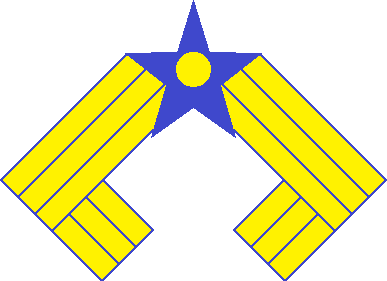 UGC Aero-Space Forces. | ||||||||||||||||||||||||||||
| January 2005. | |||||||||||||||||||||||||||||
| United Galaxies Council. | |||||||||||||||||||||||||||||
| Charter Of The United Galaxies Council. | |||||||||||||||||||||||||||||
| Aero-Space Force. | |||||||||||||||||||||||||||||
18 million total. 10 billion Regional Forces (Home/National Guard, etc.) personnel. | |||||||||||||||||||||||||||||
ALLIANCE-Class: UGS DEFIANCE; V'GER-Class: UGS FORWARD; SOJOURNER- Class: UGS ENDURANCE; KC-200/CAPRICA-Class Refuelers: UGS LONGEVITY and FORTITUDE. VF-1 Veritechs: 500,000 VAF-6 alphas: 5 million Civilian Lear Jet: 100 CivCraft-1 & -2: 20 MC-31 Angel Air Ambulance: 20 C-130 Hercules: 20,000 EC-66 "God's Eye" AWACS: 1,000 CSS-228 Raptor Combat Shuttle: 100 UC-721 Justice Utility Craft: 100 XA-11 Skyhawk Attacker: 20 UGC Comancherro: 2,000 F/A-18 Hornet Series: 2,000 F/A-22 Raptor Stealth Fighter: 2,500 A-10 Thunderbolt Attack/Bomber: 500 ASS-14 Laura Starfighter: 250 B-104 Galaxy Bomber: 100 ASF-21 Sholagar Fighter: 1,231,000 Spacer II Space Fighter: 250 TIE Interceptor Fighter: 200 TIE Drone: Many (used as missiles): EAG-81 Malcorn JSTARS: 200 F-4U Corsair Fighter: 1,000 B-25 Mitchell III Bomber: 200 A.S.6/Me-600 Bussard: 150 de Havilland DH.98 Mosquito: 200 X-TIE Fighter: 2,000 X-Ceptor: 2,000 Chir'daki ("Death Seed"): 2,000. | |||||||||||||||||||||||||||||
| Department of War. | |||||||||||||||||||||||||||||
| Lackland Space Station, Terra. | |||||||||||||||||||||||||||||
| "Aim High... Fly-Fight-Win." | |||||||||||||||||||||||||||||
on Golden Yellow. | |||||||||||||||||||||||||||||
| "Off We Go." | |||||||||||||||||||||||||||||
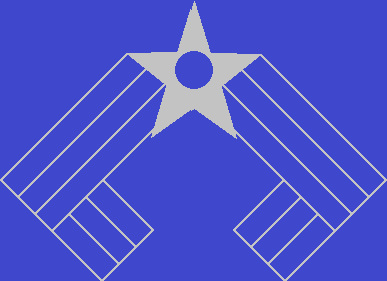 | |||||||||||||||||||||||||||||
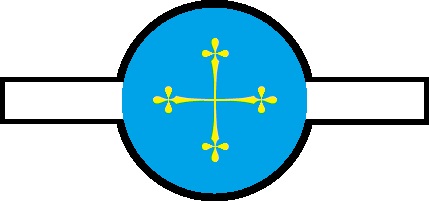 | |||||||||||||||||||||||||||||
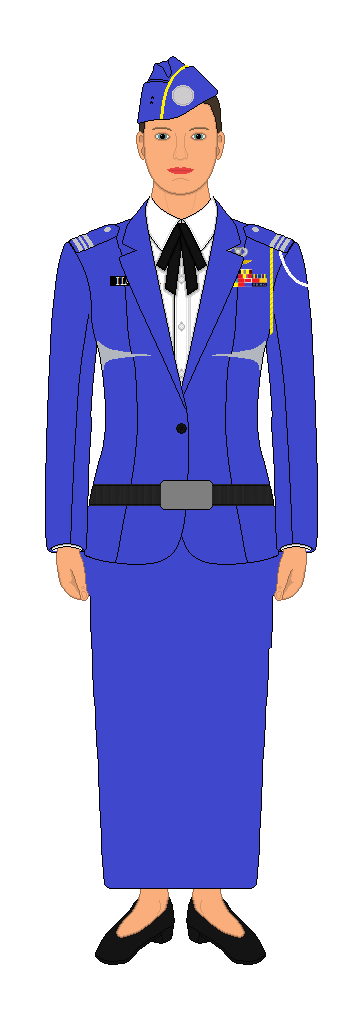 | |||||||||||||||||||||||||||||
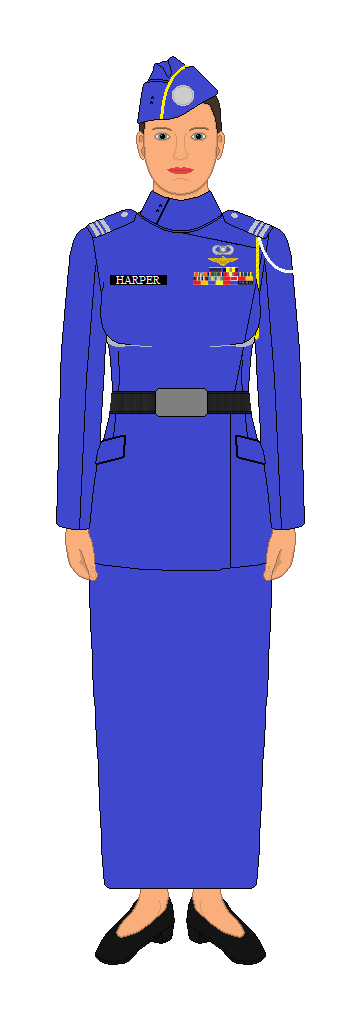 | 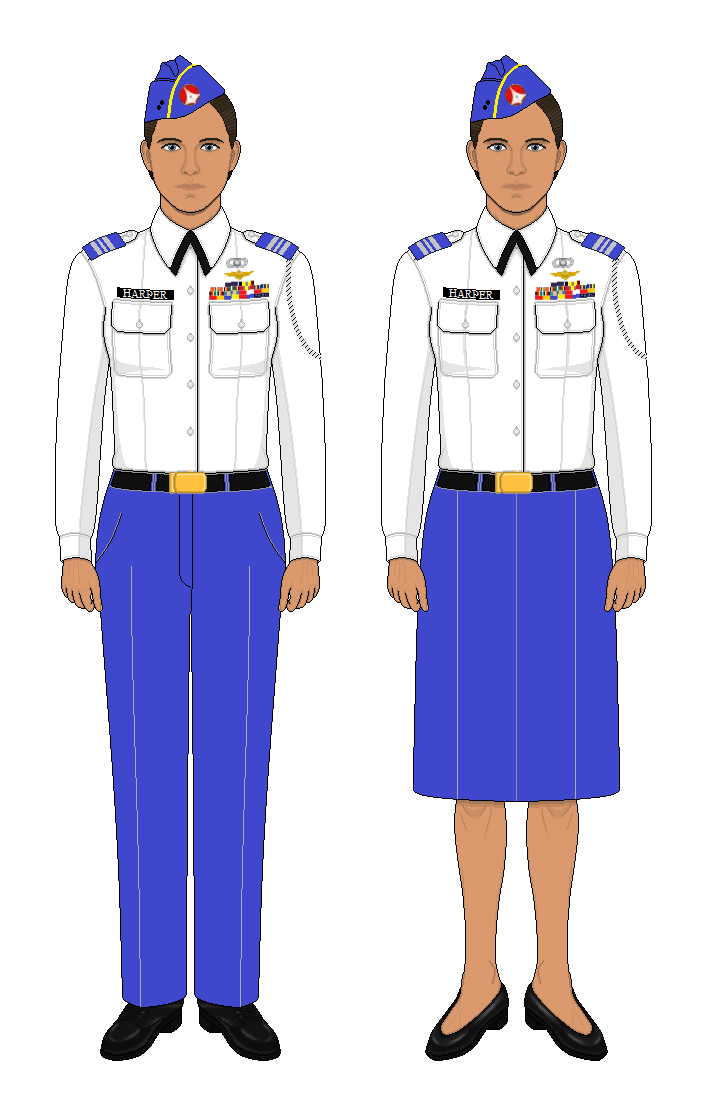 | ||||||||||||||||||||||||||||
in dress she has that and a Training Command fourrag'ere. | |||||||||||||||||||||||||||||
| Government (UGC). The Council fully funds the service, down to the last credit. | Open Wardrobe (10); Basic uniform with some specialty outfits, but nothing real special. There are nice uniforms (see Uniform Manual for more information), but not exactly whatever you want. | Unlimited Equipment (50). For the most part what they want, they get. There are some limits. | |||||||||||||||||||||||||||
| Extensive Weaponry (40) | Deluxe Communications Network (25) | Paranoid (40); Unusually paranoid, in fact. Members are banned from social networking sites, during certain operational periods they are restricted to base, they are not allowed to talk about what type of aero-spacecraft they work on (even if there's only one assigned to the base), | |||||||||||||||||||||||||||
| Big Bucks (45). | Scrupulous and Principled (8). Not every single member of the organization is so upright and moral, but the entity itself seeks to maintain its overall high character. Those that can not or will not conform find themselves out on their ass- Without money, rights, or even citizenship. | ||||||||||||||||||||||||||||
| Famous (50) | Good Salary (10) | The UGC approved the acquisition of 100 ACCLAMATOR-Class Assault Ships in the Orbital Bombardment configuration with the following diffrences: 12 B-104 Bombers in Block 1500 configurations 36 RDF/REF VF-19 Excalibur Veritechs 120 ASF-21 Sholagar Fighters This was significantly heavier than the ASF had proposed, but they quckly began deploying the fleet in support of the rest of the REF. | |||||||||||||||||||||||||||